Mastering Fraction Modeling: A Guide for Kids
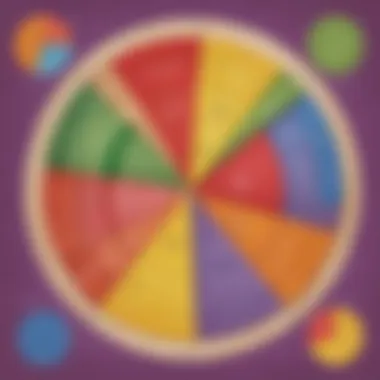
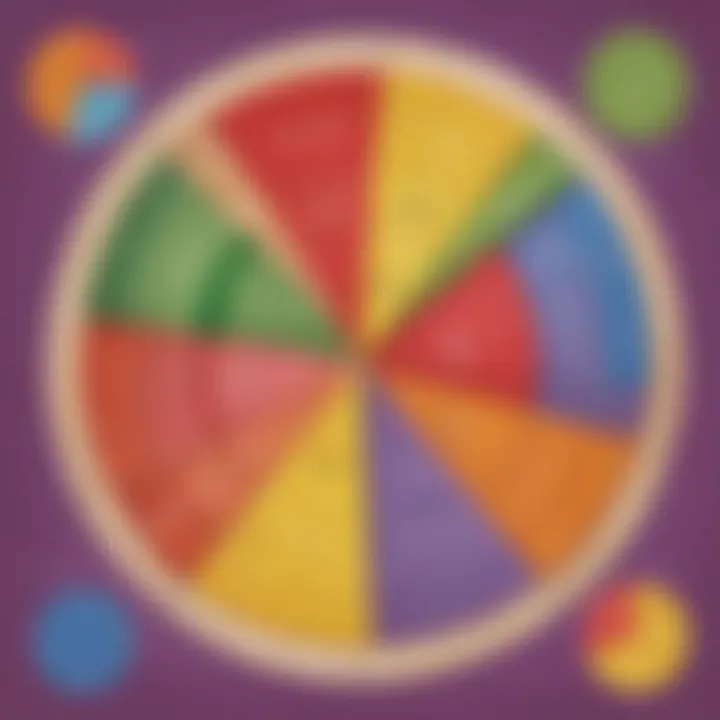
Intro
Understanding fractions is a crucial part of mathematics for young learners. It builds a foundation for later mathematical concepts. Thus, effective modeling of fractions is essential in elementary education. Educators and parents must employ various strategies to enhance children's comprehension. By using visuals and manipulatives, children can grasp the abstract nature of fractions more tangibly. This article provides fundamental techniques for modeling fractions, aiming to empower those who support children in their learning journey.
Creative Activities
Engaging children in creative activities is an effective way to model fractions. Crafting brings a hands-on approach, making learning both enjoyable and informative.
Craft Ideas
- Fraction Pizzas: Children can create pizzas using paper plates divided into slices. This allows them to visualize fractions such as halves, quarters, and eighths.
- Fraction Flags: Kids can design flags representing different fractions using colored paper. For example, a flag with one red and three blue sections represents 1/4.
- Jar of Marbles: Using a jar filled with different colored marbles can help children understand fractions by showing how many of each color exist compared to the total.
Step-by-Step Guides
Making Fraction Pizzas:
- Gather materials: paper plates, scissors, markers, and glue.
- Cut the plate into various slices: two for halves, four for quarters, etc.
- Color each slice differently.
- Ask children to identify the fractions represented by each slice.
Crafting Fraction Flags:
- Collect colored paper and scissors.
- Cut the paper into rectangle shapes.
- Divide each into sections using a ruler.
- Color the sections differently.
- Discuss what each flag represents in terms of fractions.
Educational Value
These activities not only foster creativity but also enhance understanding. Children will better visualize and internalize the concept of fractions. Crafting reinforces lessons in a concrete way, making the learning experience memorable.
Fun Quizzes
Quizzes are an excellent tool for reinforcing learning. They help assess knowledge and understanding in a fun manner.
Quiz Topics
Quizzes can cover topics such as:
- Identifying fractions
- Comparing fractions
- Adding fractions
Question Types
Children will encounter various question types, including:
- Multiple choice questions
- Fill in the blanks
- True or false statements
Knowledge Reinforcement
Quizzes help in solidifying concepts. They encourage children to think critically about fractions, ensuring that knowledge persists beyond initial lessons. Regular practice through quizzes can reinforce what children have learned.
Fact-Based Articles
Educational articles play a significant role in expanding knowledge about fractions and their applications.
Topics
Articles may cover diverse subjects, such as:
- The history of fractions
- The importance of fractions in daily life
- Different methods for teaching fractions effectively
Engaging Content
Well-written articles present information in a way that captures interest. They simplify complex concepts, making them accessible to young learners. Pictures and diagrams can enhance understanding further.
Understanding Fractions
Understanding fractions is a fundamental aspect of mathematics that allows young learners to grasp the division of whole parts into smaller, equal segments. Recognizing how fractions operate is vital, as it lays the groundwork for more advanced mathematical concepts and daily life applications. When students understand fractions, they start to visualize portions of wholes, which enhances their mathematical thinking and problem-solving capabilities.
Modeling fractions provides various advantages. It enables students to create a mental picture of how parts relate to a whole. This visualization is crucial for effective understanding. It aids in connecting abstract ideas of math to tangible experiences. Through modeling, concepts become clearer, allowing students to engage more deeply with the material.
Additionally, understanding fractions fosters critical thinking. Students learn to compare, add, and subtract fractions, skills they will encounter in real-life scenarios such as cooking and budgeting. By establishing a firm foundation in fractions, educators help pave the way for successful future learning in more complex mathematical areas.
Definition of a Fraction
A fraction represents a part of a whole or a division of quantities. It consists of two numbers: the numerator and the denominator. The numerator indicates how many parts are being considered, while the denominator indicates how many equal parts the whole is divided into. Understanding this definition is crucial for young learners, as it highlights the concept of parts relative to a whole.
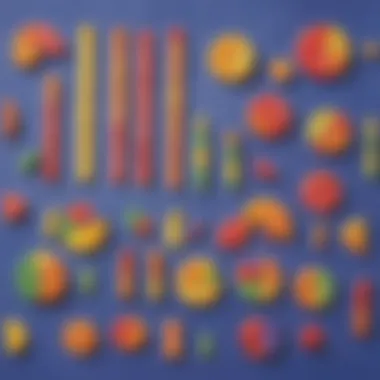
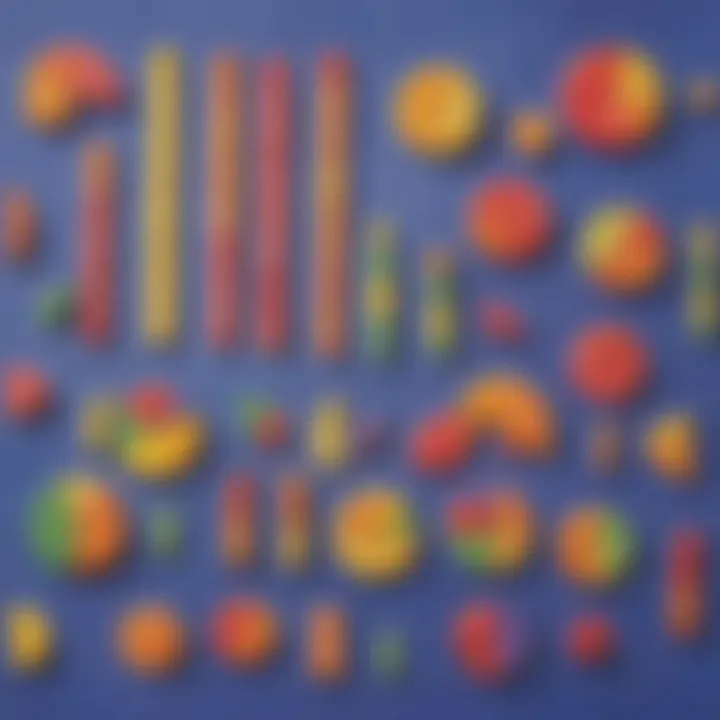
Components of Fractions
Understanding the components of fractions is essential for young learners. Each part plays a crucial role in comprehending the whole concept. These components include the numerator, denominator, and the fraction bar, each contributing to the overall understanding of fractions.
Numerator
The numerator is the top number in a fraction. It shows how many parts of the whole are being counted. This aspect is critical because it illustrates the portion of the whole we are focusing on. By emphasizing the numerator, learners gain insight into what it means to have multiple instances of a fractional part.
A key characteristic of the numerator is its flexibility. It can represent any number of parts, allowing discussions around fractions like
- 1/2
- 3/4
- 2/5
This versatility makes it an ideal component to explore. However, students must learn that increasing the numerator while keeping the denominator constant can make the fraction larger, a concept that can be confusing without proper guidance.
Denominator
The denominator is the bottom number of a fraction. It indicates into how many parts the whole is divided. Understanding the denominator is crucial because it provides context to the fraction. If the denominator is larger, each part is smaller. Conversely, a smaller denominator results in larger parts.
A prominent characteristic of the denominator is that it sets the scale for the fraction. For example, in the fraction 3/4, the denominator informs us that the whole is divided into four equal parts. Importantly, this scaling aspect helps connect fractions to their real-world applications. However, learners may struggle with the concept of larger denominators leading to smaller fractional values, so clear explanations are necessary.
Fraction Bar
The fraction bar visually separates the numerator and denominator, signifying the division between them. This component is essential because it emphasizes the relationship between the two numbers. The fraction bar acts as a line that indicates the idea of division, which is often not as clear without it.
One key characteristic of the fraction bar is its role in isolating the two components. By creating a visual barrier, students can focus on the distinct functions of the numerator and denominator. In educational contexts, using fraction bars can be useful for demonstrating operations with fractions, such as addition and subtraction. While its primary function is simple, the fraction bar is an effective tool in illustrating the importance of understanding fractions as a cohesive whole.
Importance of Modeling in Learning Fractions
Modeling fractions is indispensable in the educational journey of young learners. The ability to comprehend fractions lays the groundwork for more advanced mathematical principles. Through modeling, students can explore abstract concepts in a tangible manner. This approach caters to diverse learning styles, enhancing understanding and retention.
"Modeling makes the intangible aspects of fractions visible, allowing children to grasp their significance in real-life contexts."
Visual Learning and its Benefits
Visual learning plays a crucial role in teaching fractions. Children often struggle with purely abstract representations. By providing visual aids, educators can clarify complex ideas. For example, using fraction circles or bar models helps depict the concept of parts of a whole. These visuals foster recognition of fractions in various formats, such as halves, thirds, or quarters.
Benefits of visual learning include:
- Improved Comprehension: Young learners better understand fractions when they see how they fit together visually.
- Enhanced Memory: Visual aids help in the retention of fractions, making it easier for students to recall them later.
- Engagement: Incorporating images and diagrams stimulates interest and motivation among students, promoting active participation in lessons.
Connecting Theory to Practical Applications
Connecting theory to practice is essential in solidifying a child's understanding of fractions. Abstract concepts can seem irrelevant without real-world examples. When students apply what they learn about fractions in daily life, it reinforces their knowledge.
Practical applications of fractions include:
- Cooking and Baking: Recipes often require fractions to be measured accurately, revealing the importance of understanding parts of a whole.
- Sports: Scoring systems in games like basketball, where points are often discussed in fractions, provides relatable contexts for students.
By bridging the gap between theory and practice, learners can see the relevance of fractions. This connection encourages curiosity and encourages students to explore more mathematical ideas. Modeling fractions through real-life scenarios not only enhances understanding but also cultivates a love for learning.
Common Methods for Modeling Fractions
Modeling fractions is crucial in helping children understand this fundamental concept in mathematics. Young learners often find fractions abstract, so using various modeling methods can bridge the gap between theory and practice. These methods provide visual representations, which can make it easier for students to grasp the nature of fractions. Each method has specific characteristics and benefits. When educators and parents implement these approaches effectively, they can significantly enhance a child's comprehension of fractions.
Using Manipulatives
Manipulatives are physical objects that children can use to explore mathematical concepts, including fractions. They offer tactile experiences that can enhance understanding and retention.
Counters
Counters are simple items like small blocks or colored chips. They help illustrate fractions by allowing students to group items into sets. For example, using counters to represent fractions like 1/2 can help children visualize and physically manipulate the concept. The key characteristic of counters is their versatility, making them suitable for various fraction topics.
Counters are beneficial because they allow learners to engage directly with the material. This interaction can make learning fractions feel less intimidating. One disadvantage is that without guidance, students may struggle to connect counters back to numerical representation.
Fraction Tiles
Fraction tiles are rectangular pieces that represent different fractions. Each tile visually shows how fractions relate to one another, providing a clear comparison between sizes. They are useful for activities like adding or subtracting fractions since students can physically combine tiles to see results.
The standout feature of fraction tiles is their ability to depict fractions in a comparative context. They offer an effective visual representation, which can simplify complex concepts. However, one downside is that if not properly organized, they can become confusing for learners.
Blocks
Blocks are another form of manipulatives that can help with fractions. Just like counters, they can be stacked or separated to demonstrate division and addition of fractions. They provide a three-dimensional aspect, allowing children to understand parts of a whole.


The main characteristic of blocks is their solid structure, which helps reinforce the concept of fractions. They can also be used for creative activities, making learning enjoyable. However, they may sometimes be less precise than other manipulatives if they do not represent fractions clearly by size.
Fraction Number Lines
Fraction number lines serve as a linear visualization of fractions, showing their relative positions and values. This model is beneficial for students as it allows them to see how fractions sit on a number continuum.
Creating Number Lines
Creating number lines is a simple yet effective method for representing fractions. Students can draw their own number lines and divide them into portions to represent different fractions. This hands-on activity promotes engagement and active participation in learning fractions.
The unique feature of creating number lines lies in the ownership of learning. By crafting their own representation, students feel a connection to the material. However, the challenge is ensuring that students accurately scale their lines, as inaccuracies can lead to confusion about the size of fractions.
Using Number Lines for Addition and Subtraction
Using number lines to perform addition and subtraction involving fractions is very effective. Students can visualize moving right for addition and left for subtraction. This method supports a clear understanding of how fractions interact.
The advantage of this technique is its simplicity and clarity. Number lines help children see the operation on fractions concretely. A downside is that children may require practice to use this method confidently without relying too heavily on visual aids.
Visual Fraction Models
Visual fraction models provide pictorial representations, helping children to grasp fraction concepts. These models can be particularly beneficial for younger learners, as they translate abstract ideas into concrete visuals.
Circle Models
Circle models use circles divided into equal parts to represent fractions. They help students understand concepts such as equivalent fractions and adding fractions with like denominators visually.
The key characteristic of circle models is that they demonstrate how different parts make up a whole. They are popular because they are easy for young learners to relate to. However, an issue is that circles may not always represent all fractions accurately, especially for fractions larger than one.
Bar Models
Bar models show fractions as segments of bars, allowing students to compare different fractions visually. This format can be especially helpful when working with unlike denominators.
Bar models stand out because they clearly illustrate equal parts within a whole. They are beneficial for visual comparison among fractions. A disadvantage may be that some students struggle to visualize the relationships unless carefully guided.
Area Models
Area models represent fractions as part of a rectangular or square area. This approach visualizes how fractions cover a space. It works well for teaching multiplication and division of fractions.
The distinctive feature of area models is that they provide insight into the size and proportion of fractions within larger areas. They are effective for teaching complex fraction concepts. However, utilizing area models may become complicated for some learners without structured guidance.
Effective modeling methods can transform students' experiences with fractions, turning confusion into clarity.
Activities for Engaging Young Learners
Engaging young learners in the concept of fractions is essential for solidifying their mathematical foundation. Active participation through various activities not only makes learning enjoyable but also fosters deeper conceptual understanding. These activities allow children to experience fractions in practical situations, leading to better retention and application of knowledge.
Hands-On Fraction Activities
Hands-on activities encourage children to manipulate and explore fractions tangibly. Two popular types of these activities are cooking and art projects.
Cooking and Recipes
Cooking is a rich context for exploring fractions. It allows children to visualize and physically manipulate ingredients as they measure quantities. When following recipes, children encounter fractions in a real-world scenario. For example, doubling a recipe involves understanding that 1/2 cup plus 1/2 cup equals a whole cup. This practical application reinforces their comprehension.
One key characteristic of cooking is its interactive nature. Kids can make mistakes and adjust, enhancing problem-solving skills. The process of measuring ingredients exposes young learners to fractions in a significant way. However, it requires supervision to ensure safety.
The unique feature of cooking is that it combines math with sensory experiences. The smell, taste, and texture of food can motivate learners. The disadvantage is potential complexity in understanding scales for recipes.
Art Projects
Art projects serve as another beneficial approach to modeling fractions. These activities incorporate creativity and allow children to explore fractions through visual means. For instance, using colored paper, a child can cut shapes into halves or thirds, visually creating fractional parts.
A significant characteristic of art projects is their ability to engage a child's imagination while learning. Creating and manipulating shapes provides a direct understanding of what fractions represent. Such activities often appeal to kinesthetic learners, who thrive on doing rather than just listening.
A unique advantage of art projects is their versatility; they can be adapted to suit various learning styles and age groups. A potential disadvantage is that art supplies can be costly or not readily available.
Games and Interactive Learning
Games introduce a playful aspect to learning fractions and can significantly enhance engagement. Two popular examples are Fraction Bingo and online fraction games.
Fraction Bingo
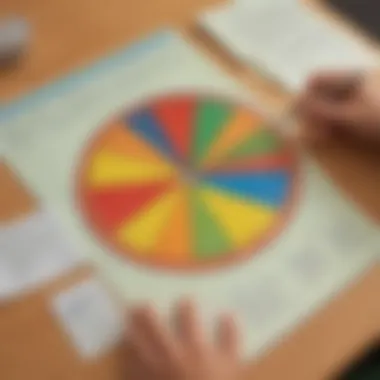
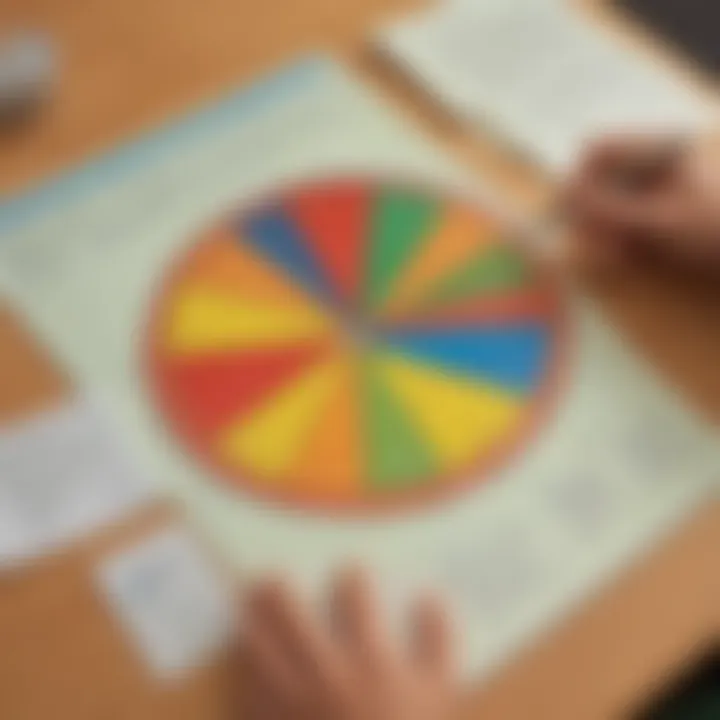
Fraction Bingo transforms the traditional bingo game into a lively fraction-learning activity. Children can match fractions displayed on cards with the corresponding fractions drawn, reinforcing their recognition and understanding. This game encourages quick thinking and reinforces connections between fractions and their representations.
A key characteristic of Fraction Bingo is its competitive nature. Children often enjoy competing for a win, which effectively motivates them to keep practicing. This social aspect of learning enhances their enjoyment. However, various participants may find it challenging if they do not understand fractions well, balancing competitiveness with learning volume can be a concern.
Online Fraction Games
Online fraction games leverage technology to provide animated, interactive experiences that can deepen understanding. Many platforms offer engaging activities where children can practice fraction addition, subtraction, and comparisons in a fun environment.
One vital aspect of online fraction games is their accessibility. Children can engage with fractions anytime, offering flexibility to learning. They often provide instant feedback, which can be useful for correcting mistakes immediately. However, reliance on technology can experience some drawbacks as it may not always align with traditional learning objectives. Additionally, excessive screen time could be a concern for parents.
In summary, involving children in hands-on activities, art projects, games, and online resources helps them recognize fractions in various aspects of life. These engaging methods foster a deeper understanding, making mathematical concepts more tangible.
Challenges in Learning Fractions
Understanding fractions can be a daunting task for many young learners. The complexities surrounding this concept often lead to confusion and frustration. This section unpacks some of these challenges, empowering educators and parents to recognize and address them effectively. By highlighting common issues and misconceptions, we can create a supportive learning environment that fosters growth and confidence.
Common Misconceptions
Many students enter the classroom with preconceived notions about fractions. These misconceptions can hinder their ability to grasp more complex mathematical concepts. For instance, a frequent problem is viewing the numerator and denominator as independent rather than related. Children might think of fractions simply as numbers without understanding their purpose. Thus, it is crucial to clarify that the numerator indicates how many parts we have, while the denominator represents the total number of equal parts. Educators should actively work to dispel these myths through clear examples and visual aids, making sure students appreciate the relationship between the two components.
Strategies to Overcome Learning Barriers
Reinforcing Basics
Returning to the foundational principles of fractions is essential. Reinforcing basics means reviewing the core concepts surrounding fractions frequently. This strategy builds a strong framework for further learning. One key characteristic of this approach is its simplicity, making it easy for students to digest. By repeatedly engaging with these foundational elements, learners gain confidence and accuracy.
The unique feature of reinforcing basics is that it can be achieved in many various ways. From games to practical scenarios, this method can cater to different learning styles. In the context of this article, emphasizing the grasp of foundational fraction concepts is not just beneficial, but vital. It reduces future misconceptions and provides a smoother transition into more advanced fraction topics.
Patience and Practice
When facing challenges, patience and practice emerge as vital strategies. The process of learning fractions is gradual. Key to this approach is ensuring learners understand that mastery does not come overnight. Frequent practice allows students to build their skills in a supportive context. Practicing problems regularly consolidates their learning and boosts their confidence.
A unique feature of this strategy lies in its flexibility. Patience and practice can be adapted to each student's pace. While this may take more time, it ultimately leads to better retention and understanding of fraction concepts. In this article, we emphasize the necessity of patience and practice as they foster resilience. Without these, students might abandon their efforts, leading to long-term gaps in their mathematical education.
Supporting Students with Diverse Learning Needs
Supporting students with diverse learning needs is crucial in the context of teaching fractions. This diversity arises from various factors such as learning styles, backgrounds, and cognitive abilities. Understanding and accommodating these variations ensures that each child can engage with the material effectively, leading to improved comprehension of fractions. When educators adopt specific strategies to meet these needs, they create an inclusive environment where all learners can thrive.
In teaching fractions, it is essential to recognize that some students might struggle with traditional methods or concepts. This awareness allows teachers and parents to develop specialized approaches tailored to individual learning preferences. For example, visual learners may benefit more from hands-on activities and illustrative models, while auditory learners might grasp concepts better through songs or verbal explanations. Providing options empowers students and promotes a positive learning experience.
Differentiated Instruction Approaches
Differentiated instruction plays a critical role in teaching fractions to young learners. This method involves tailoring educational experiences to meet individual student needs. By employing various teaching strategies, educators can ensure that every student has the opportunity to comprehend fractions in a way that makes sense to them. For instance, a teacher can use group activities that cater to different learning levels, allowing students to collaborate while still working on personal challenges.
Additionally, learning spaces can be adapted to support various learning styles. Grouping students based on their strengths and areas of need encourages peer learning and support. Through differentiation, educators can focus on both mastery of fraction concepts and development of critical thinking skills.
Utilizing Technology for Learning Enhancement
In today's digital age, technology serves as an indispensable tool for enhancing the learning of fractions. Utilizing various technological solutions can accommodate diverse learning needs effectively.
Educational Apps
Educational apps are designed to engage children while effectively teaching fraction concepts. These apps often include interactive games that visualize fractions, making it easier for students to grasp their meanings. One key characteristic of educational apps is their adaptability. Many of them adjust the difficulty level based on the child’s mastery, allowing for personalized learning.
A unique feature of these apps is their use of gamification, which turns learning into an enjoyable experience. This can significantly increase student motivation. However, teachers and parents should be cautious about screen time, ensuring a balanced approach to technology use in learning.
Online Resources
Online resources offer a wealth of information and activities to reinforce fraction learning. Websites often provide printable worksheets, instructional videos, and interactive lessons. This variety ensures that students can access material that resonates with their individual learning styles, enhancing their understanding of fractions.
A significant advantage of online resources is their accessibility. Students can explore them at their own pace, revisiting challenging concepts as needed. However, it might be important for parents to supervise their children’s internet use to ensure they are engaging with quality content.
Teaching fractions effectively involves recognizing the unique needs of every learner and employing a mix of differentiated instruction and technology.
End
Understanding how to model fractions is critical for young learners. It provides them with the foundational skills they need as they progress through their educational journey. Modeling fractions allows children to grasp complex mathematical concepts in a tangible manner. By employing visual and interactive methods, educators can spark curiosity among students. This engagement is crucial in building confidence and competence in mathematical skills.
Summary of Key Points
- Importance of Visual Representation: Visual tools help in simplifying fractions.
- Hands-On Activities: Activities enhance retention and understanding.
- Addressing Learning Challenges: Identifying misconceptions can lead to targeted support.
- Diverse Learning Needs: Offering varied teaching strategies ensures inclusion.
Encouraging Continuous Learning
Fostering a culture of ongoing learning is vital. Encourage parents and educators to create environments where questions are welcomed. Provide resources that allow children to explore fractions beyond the classroom. Recommended practices include regular practice at home, using educational apps, and integrating math into daily activities like cooking.
Continuous engagement with mathematical concepts, such as fractions, helps to solidify understanding and encourages a love for mathematics that lasts a lifetime.







